

Every teacher brought their own talents to the table as we worked on our session plans together. Some were excellent at locating resources, some liked writing the session plans, and all imagined the project through the eyes of their students, and suggested ways to adapt it for their students’ needs. Everyone came up to speed on the topic more quickly because we worked together – just like what we hope for when our students work in inquiry circles. We spent most of our planning time on the OPEN, IMMERSE, and EXPLORE phases, and so we entered those phases with materials and activities in hand. Teachers didn’t march in lockstep through the project, of course, but it gave everyone a framework they could refer to along the way.
Suzy Menafro Palmer is one of the 6th grade ELA team who wasn’t available to attend the Institute last summer, but was completely on board from our first meeting, and enthusiastically dove into planning and resource gathering as we prepared for our adventure. In hindsight, she offered her impressions of the unit (shown in blue):
The “Open” part of our Urbanization Unit was probably my favorite. Listening to my students be such little experts about their town was so impressive. I couldn’t believe how knowledgeable they were about the history of Metuchen. It was clear that their parents explain ideas to them like taxes and population increases, and they went on and on about what a great town they live in. They were so proud of their downtown appeal, the family oriented sense of community that has been established here, and their reputation for being “The Brainy Boro”.
We looked at maps of Metuchen over the years from the 1800’s to a more current map. Something that sort of took me by surprise was when it was evident that most students really weren’t familiar with reading maps. Once they understood what they were seeing, they were really intrigued and made some great insights about how the town has changed over the years.
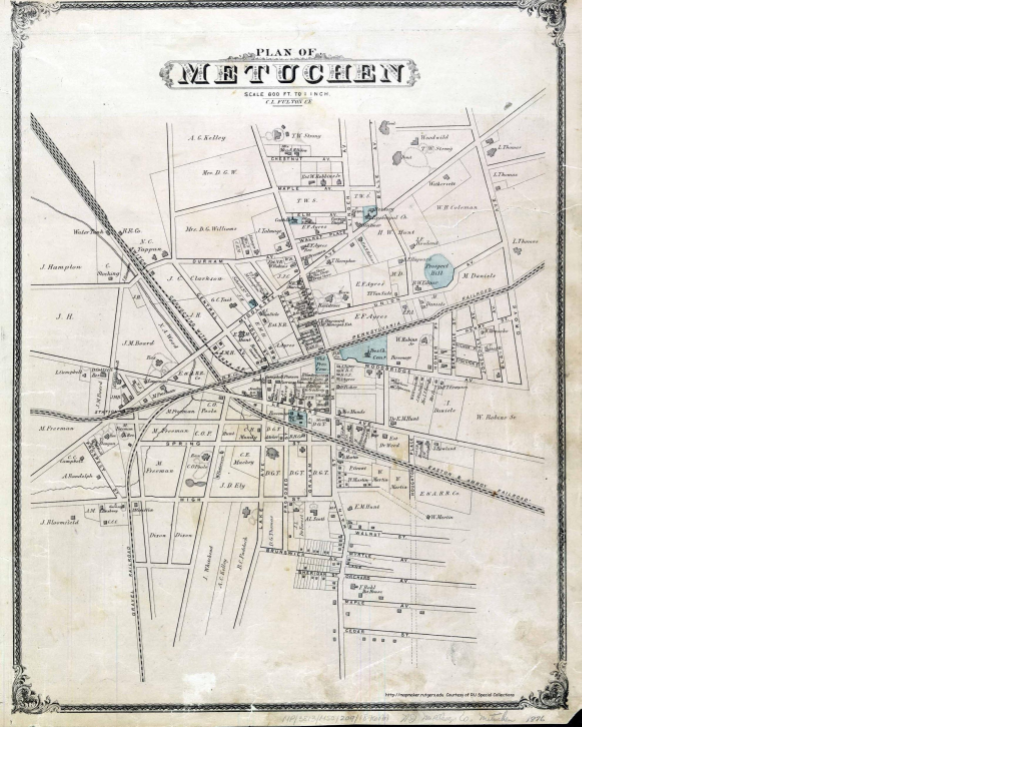
What’s really exciting about GID is the opportunity for us to see how it connects to our students’ lives, and to see them as experts in things we otherwise would not have know about, and cross-curricular opportunities. Suzy then went on to describe part of our Immerse phase:
We also did a walk around the school to see how the building has changed over the years. The students identified how there are different bricks indicating that there are additions to the building, and there are new lockers that were clearly an afterthought because they don’t match the lockers already in place.
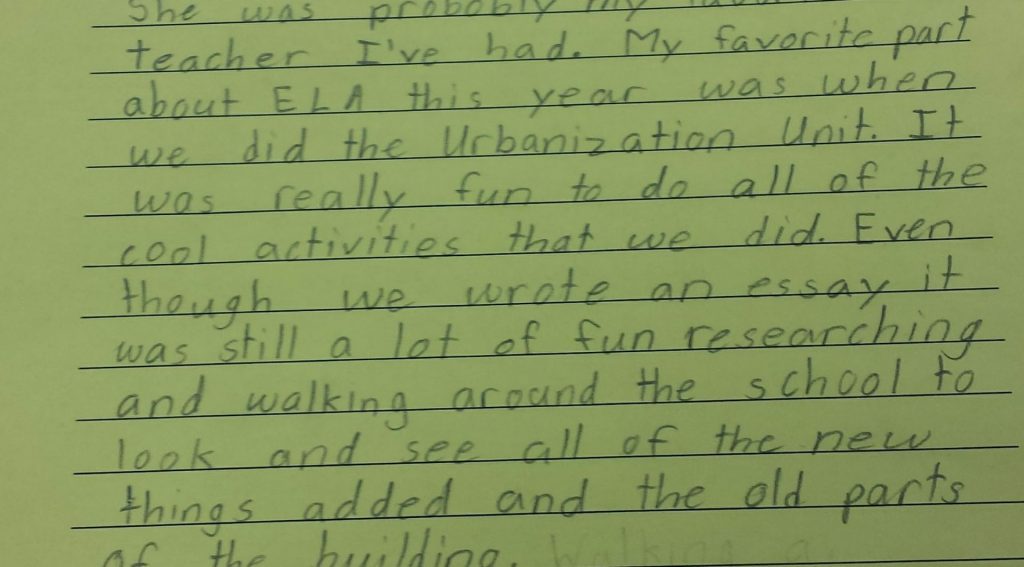
…Explore…
In our “Explore” phase students were in groups reading articles about the subtopics of urbanization. This was so well organized by the team of teachers who put this together. It went seamlessly, and the students were really interested in all of the topics. Some of them even cheered when I gave them the folder for “Trends in Migration” (I was in shock). Ideas that I thought they would be totally bored by, they were excited! I have to say… I did have an exceptional class of 6th graders this year who are very task oriented, people pleasing, high achievers. However, I was still pleasantly surprised they were interested in the topics as they were.
…and then Identify…
When it came time to get even more specific and come up with their research questions, I was again impressed with the variety and specificity they came up with for questioning. They were interested in animals, war, drones, flying cars, city gardens, and so much more. One of my students even wrote a paper about how advancements in technology for cities with apps like Uber have decreased the number of DUI’s in a certain city.
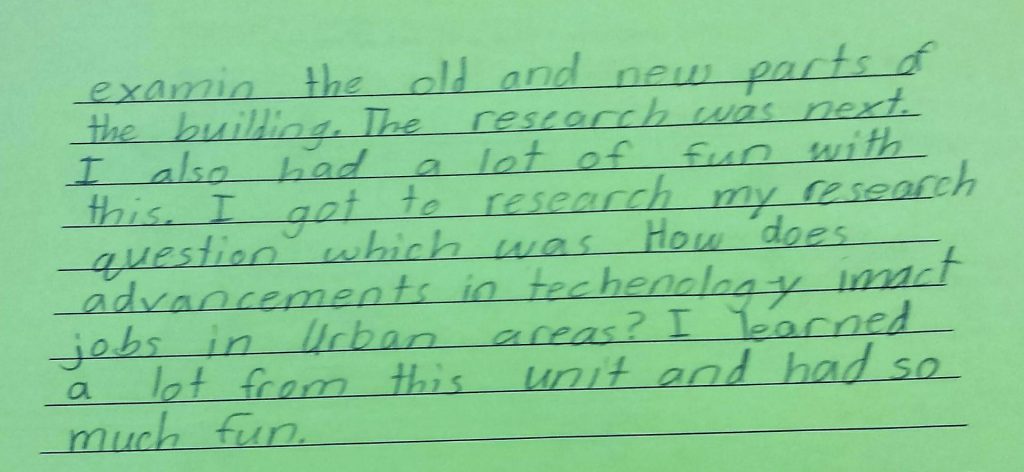
There were some students who really went above and beyond, and then there were some students who were pretty basic and surface level with their research with little insight. But that’s sixth grade in a nutshell! Some kids are just more engaged and capable of taking it to another level, and some of them just aren’t there yet, and I’m really okay with that. I was happy that they found a topic they were interested in and worked start to finish.
The Gather phase required lots of flexibility, since so many students needed to share resources, and technology was at a premium, because we were in the midst of standardized testing. We spent a lot of time negotiating for the use of laptop or Chromebook carts (and not always successfully). Books were on a cart that stayed in the library, and students came down to borrow them as needed.
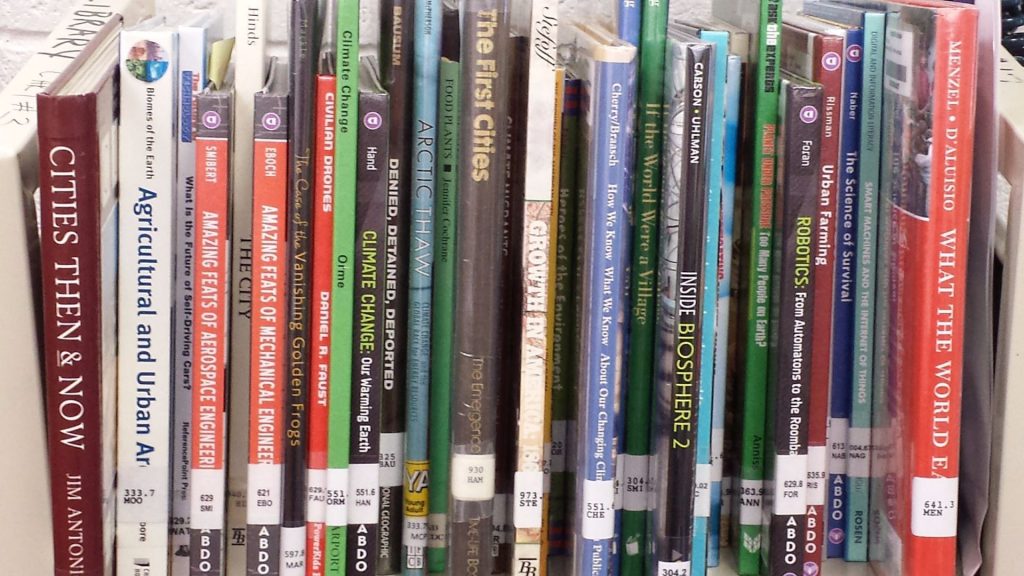
Amazingly, we didn’t misplace one book or headset in the process!
Everyone seemed to understand that other classes were working with these materials – there was definitely a sense of a community of learners throughout the 6th grade.
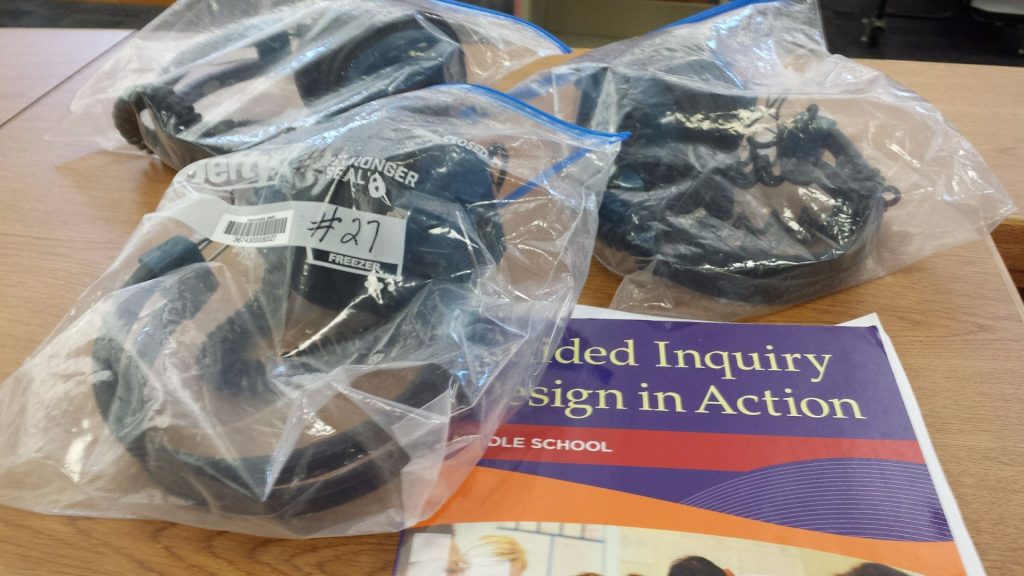
Next up: Create, Share, and Evaluate
Suzy Menafro Palmer, 6th Grade ELA teacher and
Maryrose Little, Librarian
Edgar Middle School
Metuchen, NJ